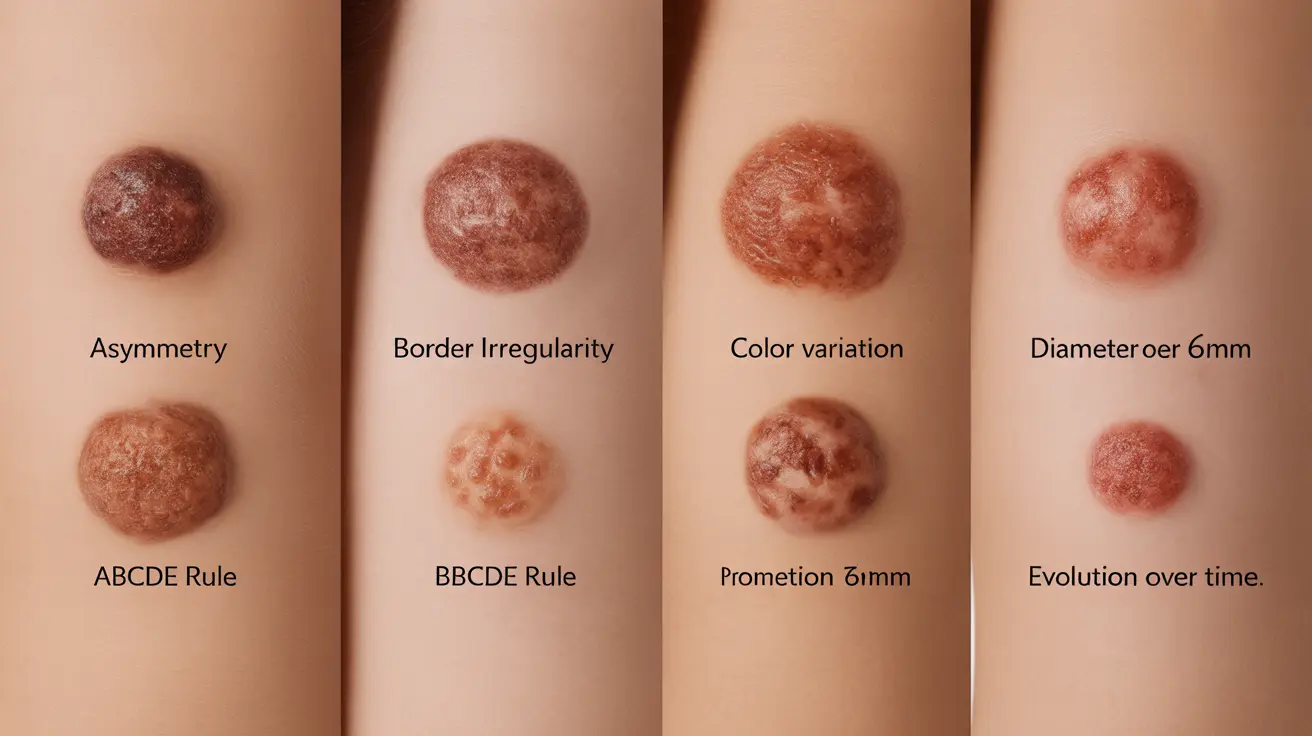Understanding what melanoma looks like is crucial for early detection and treatment of this serious form of skin cancer. By learning to recognize suspicious moles and skin changes through visual examples, you can better monitor your skin health and know when to seek medical attention.
This comprehensive guide will help you understand the visual characteristics of melanoma, including how to identify warning signs and distinguish between different types of suspicious skin lesions.
The ABCDE Rule of Melanoma Detection
The ABCDE rule is a fundamental tool for identifying potentially cancerous moles through visual inspection:
Asymmetry
Benign moles are typically symmetrical. If you were to draw a line through the middle of a suspicious mole, the two halves should match. Melanomas often show asymmetry, with one half looking different from the other.
Border
Normal moles have smooth, even borders. Melanomas frequently show irregular, notched, or scalloped edges that may appear blurred or ragged.
Color
Healthy moles usually maintain one uniform color. Melanomas often display multiple colors or shades, including brown, black, red, blue, or white within the same lesion.
Diameter
Most benign moles are smaller than 6 millimeters (about the size of a pencil eraser). Melanomas are often larger, though they can be smaller when first detected.
Evolution
Any change in size, shape, color, elevation, or another trait, or any new symptom such as bleeding, itching, or crusting, could be a warning sign of melanoma.
Common Types of Melanoma and Their Appearance
Superficial Spreading Melanoma
This is the most common type, appearing as a flat or slightly raised patch with irregular borders and varying colors. It often develops from an existing mole.
Nodular Melanoma
This aggressive form appears as a raised bump, usually black but sometimes blue, red, or pink. It tends to grow more quickly than other types.
Lentigo Maligna Melanoma
Common in sun-damaged skin, this type appears as a flat, brown patch with irregular borders, similar to a large freckle or age spot.
Acral Lentiginous Melanoma
This rare form appears on palms, soles of feet, or under nails. It often looks like a brown or black patch with irregular borders.
High-Risk Body Areas for Melanoma
While melanoma can develop anywhere on the body, certain areas are more commonly affected:
- Back and shoulders (especially in men)
- Legs (particularly in women)
- Face and neck
- Arms and hands
- Scalp (often hidden by hair)
- Feet, including soles and between toes
Frequently Asked Questions
What do melanoma pictures typically look like and how can I identify suspicious moles?
Melanoma pictures typically show irregular-shaped moles with varying colors, uneven borders, and asymmetrical patterns. Look for moles that stand out from others ("ugly duckling" sign) or show changes over time.
What are the ABCDE signs for detecting melanoma in skin pictures?
The ABCDE signs are: Asymmetry (uneven halves), Border irregularity, Color variation, Diameter larger than 6mm, and Evolution or change over time.
How can I distinguish between different types of melanoma by their appearance?
Different melanoma types have distinct characteristics: superficial spreading melanomas appear as irregular flat patches, nodular melanomas show as raised bumps, lentigo maligna looks like large brown patches, and acral lentiginous melanomas appear on palms or soles.
What should I do if I notice a mole that is changing shape, color, or size in my skin?
If you notice any changes in a mole, schedule an appointment with a dermatologist immediately. Document the changes with photos if possible, and continue monitoring the area until your appointment.
Where on the body does melanoma most commonly appear according to visual guides?
Melanoma commonly appears on the back and shoulders in men, legs in women, and the face, neck, and arms in both genders. However, it can develop anywhere on the body, including hidden areas like between toes or under nails.




